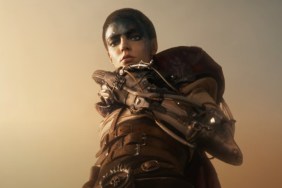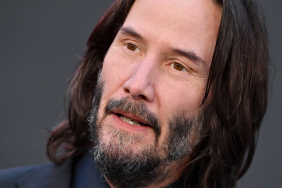Matt Reeves on redefining the “monster” genre

Here’s the man behind the monster movie. The wizard hiding behind the curtain. ShockTillYouDrop.com scored an opportunity to speak with director Matt Reeves whose Cloverfield is poised to turn the giant creature/disaster genre on its rancorous, scaly head. Opening January 18, 2008 from Paramount, the film has attracted a blistering amount of hype and speculation. And while Reeves deftly dances around spoilers during our conversation, he does shed some light on what’s in store for us next month.
Starring Michael Stahl-David, Mike Vogel, Odette Yustman and Lizzy Caplan, Cloverfield is told through discovered home video footage taken during an evening when Manhattan suffers an attack by some…”thing.” See five minutes of the film via a special “widget” right here; and while you’re at it, learn how you can win a special screening in your hometown.
ShockTillYouDrop.com: When he addressed the geek nation at Comic-Con, J.J. Abrams voiced his desire to give America their own giant monster to fear. Did you feel the same way? That the genre still hadn’t been approach properly on our own turf?
Matt Reeves: Absolutely, but also the thing that was exciting to me was the approach to the film. Take a monster movie but do it in a way that was very naturalistic and authentic. The idea of that juxtaposition – a realistic monster movie was the thing that excited me most. That was the best way to create a monster that we could proud of.
Shock: There’s concern out there that you’re using this style to hide the monster and that we won’t ever get a good look at it – similar to “The Blair Witch Project.”
Reeves: It’s funny, when we first started I hadn’t seen “Blair Witch” at the time and thought I should go look at it because obviously there will be comparisons with the Handicam approach. I thought the concept was effective but I noticed immediately that they hadn’t followed their idea through as clearly as what we were going to do. I think in that movie, it’s not only the Handicam but there’s 16mm black-and-white footage inter-cut, too. We wanted this to be as if someone found a Handicam, took out the tape and put it in the player to watch it. What you’re watching is a home movie that then turns into something else. But the other thing I noticed was that the “Blair Witch” guys obviously didn’t have the resources to make a big movie and this was a great way to tell their story. They used that to their advantage to create great suspense. We’re creating great suspense while you see the great features of this monster. The other thing I think is very exciting is this monster is huge and you see everything. You see it in a way that is if you’re shooting it with a Handicam. If you’re hiding under a car, you see it that way, and there are other moments – I can guarantee you – you are seeing this monster in a huge way.
Shock: That must have been an interesting creative challenge to shoot something that big through unconventional – by cinematic standards – means.
Reeves: Yes! People who see the trailer probably think they won’t see anything. They’re going to see a lot and that will hopefully be a big surprise to them. A satisfying surprise. We’ve used the vibe of that Handicam thing to create a mood, feeling and an experience. Normally where you might shoot one of these set pieces in a way with huge wide shots and angles – this particular style creates an authenticity. The clip we put up [in the widget] shows you the experience you’re going to have. There are going to be jump cuts as there would be in home movies. The only cuts you see in this movie are when the camera is turned off and back on. There’s a feel as if it was all edited in-camera.
Shock: Regarding the widget clip, when the Statue of Liberty head falls to the street, I loved how everyone broke out their camera phones to document the moment. That was a nice touch.
Reeves: We thought that was very accurate for the time. To me, I felt that if you do it in this style – if this event had happened in New York and you had been there with a cell phone or camera you could’ve told the story yourself. The fun thing I had in mind was there’s this hidden idea that there’s this Rashomon experience that exists – everybody who experienced this night had their cameras, they made their movie of this event. In our case, “Cloverfield” is one of them.

Shock: Is that to say there are more stories to be told then, post-“Cloverfield”? More to learn about the event that unfolds throughout the night?
Reeves: No, I don’t think so. I don’t know what we’ll do next, there are a lot of fun things we’re talking about. That was just something I wanted to put in the movie, to remind people that this is an Everyman experience. Media is so much an aspect of our lives today that even evoking that idea was exciting to us. That there could be different stories out there.
Shock: The vérité style seems to be very “in” these days. Romero applied it to the zombie genre with “Diary of the Dead” recently. Do you feel the approach is reinvigorating a sub-genre like the giant monster film?
Reeves: I do because in this case – what we’re doing is a very current idea. I think the genre movie like a giant monster movie – the fun of them is metaphor and the idea of how they speak about the anxieties of our time. “Godzilla” was very much about the A-bomb. “Cloverfield” very much speaks to the fear and anxieties of our time, how we live our lives. Constantly documenting things and putting them up on YouTube, sending people videos through e-mail – we felt it was very applicable to the way people feel now.
Shock: Can you explain how you went about shooting in NYC? Was it guerilla-style or was it very much like shooting any other big budget production?
Reeves: There was a guerilla approach in certain areas that we wanted to shoot in. Then we were shooting scenes where it wasn’t guerilla at all. It was big movie stuff, but the challenge was to treat it with a guerilla mentality. We had to keep it authentic, leave room for improvisation. That kind of guerilla style was very much the spirit of the movie even though we may not have been doing it guerilla style.
Shock: How many digital FX shots are on order for this film?
Reeves: I can’t put a number to it because we have so many continuous takes. There’s a lot of continuous action. So what might be 20 or 30 shots in another film is going to be one big one in our film. It’s hard to quantify. The FX people are working overtime right now to finish this. It’s just enormous. And a huge undertaking. Having never done a visual FX film before, I’m incredibly thrilled. When they gave me the outline of the film, I was like, ‘This is huge, how are we going to do this?’ We’re going to see a grand-scale epic movie but from a certain point of view. At times you’re seeing enormous stuff, you don’t exactly get it the way you would expect because we want it to be authentic. If there’s a monster moment – you might not have this grand shot of him, you might get it after the fact because you want to have realistic action. But you will absolutely see everything – and you will see the monster in very intimate detail. You will get a very close look. People who have seen the trailer might think we are using this style to avoid seeing the monster, but that is definitely not what we’re doing. We’re using it to build dread and anticipation.
Shock: Beyond the FX, this film has a human element to it as well, right?
Reeves: When J.J. and Bryan [Burk, producer] came to me I said, ‘This is all grand scale stuff. Huge scope. Everything I’ve done until this point is very character-based!’ They wanted me to bring those character sensibilities to this film. So they introduced me to Drew and we started to talk about how we could go further with the characters. And while we did the casting process, we were looking for people who could improvise as well. We were trying to find people that could provide an intimate relationship with these characters and they were ones we were discovering through Handicam footage so it wasn’t your traditional movie exposition where you meet people. That was another aspect of the movie that was very different.

Shock: How funky is it to see the public Internet reaction surrounding this film?
Reeves: The fun thing about doing the teaser trailer was that it was a throwback to a time when we would see a trailer for a film like “Close Encounters of the Third Kind.” You were sitting there seeing a trailer for a movie that was completely mysterious. There’s so much media saturation now we felt we’d shoot a quick teaser and throw something out there. Throw it out to the people so they can have a sense of discovery again. Then Paramount said, ‘What if we don’t even put the title out there so people can speculate?’ We wondered if the MPAA would go with it, they didn’t even know how to respond at first. They were like, ‘That’s never happened before.’ But they let us do it. We knew people would be intrigued, but we had no idea the level to which they would begin to engage. We spent a large part of our prep period making the teaser trailer and using it as a basis as a prep for the movie. Shooting the teaser trailer was our way to understand how we were going to pull this off.
Shock: The theories that permeated message boards were all over the map. Did you guys find time to sift through them all?
Reeves: Around the time the trailer came out, we were a week into shooting the movie. And as we were shooting the movie we were starting to see this reaction building and that was exciting for us. We’d be on set creating this thing, finding out the language of it. I’d come home and these people have seen the trailer and are creating their own movie in a way based on their speculations. That was awesome. At the last minute, when we were shooting the trailer, we wanted people to know – ’cause we hadn’t created the monster yet – that it was a giant monster movie, we wanted a tease of that. I jumped to the microphone and said the line, “I saw it! It’s alive! It’s huge!” And one of the most amusing things is I had come home and someone on the web had taken that section and started to do an analysis on it and thought I said, “It was a lion.” The way I speak was too fast sometimes and they couldn’t make it out.




Source: Ryan Rotten









